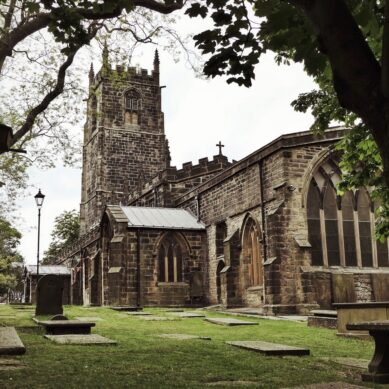A sweeping corner of the South Yorkshire countryside, once roamed by Roman settlers and medieval deer, is at the heart of a growing legal storm as local residents rally to oppose plans for a colossal solar farm they claim would devastate a site of profound historical and ecological significance.
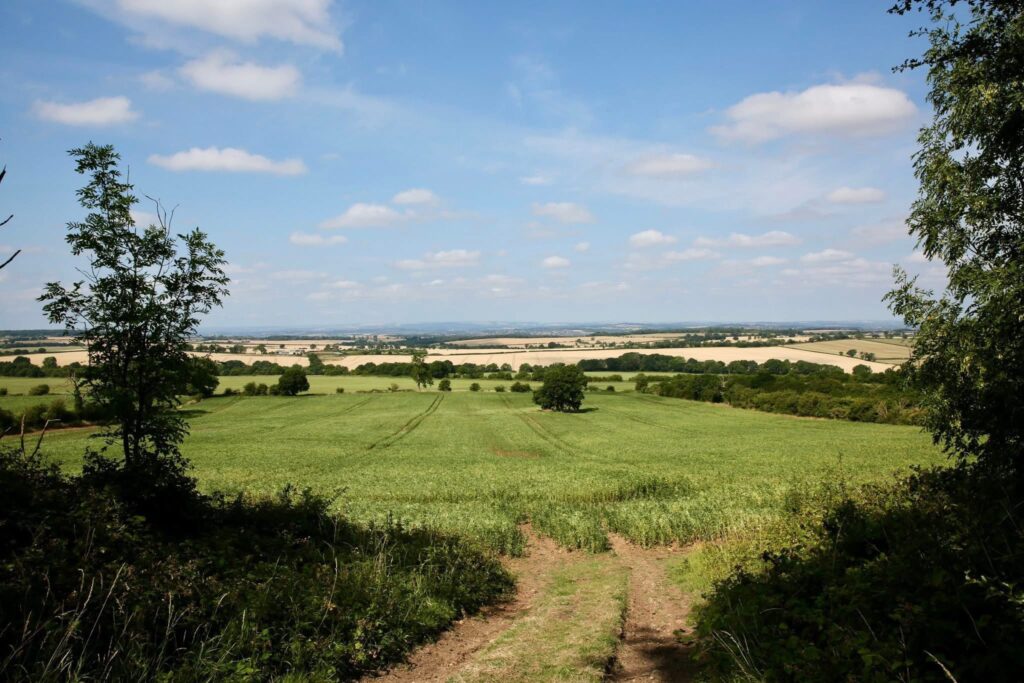
The proposal, put forward by energy developer Green Nation, would see the installation of morethan 400,000 solar panels on a 1,400-acre valley of greenbelt land in the Conisbrough Parks ward between Conisbrough, Mickelbring, Clifton, Firsby and Ravenfield.
Called Whitestone 1, it is part of Green Nation’s three-site programme to create the UK’s biggest solar farm here in South Yorkshire over the next forty years. The other two sites at Swallownest and Kiveton Park would mean the project stretches 15 miles, all having access to the power grid at Brinsworth via miles of underground cabling.
The proposed site at Conisbrough, however, is no ordinary farmland: it is the grounds of an ancient deer park that has remained largely untouched for over a thousand years due to its historic value.
In the 1980s, archaeologists uncovered the remains of a 200AD Roman villa and bath house on the site.
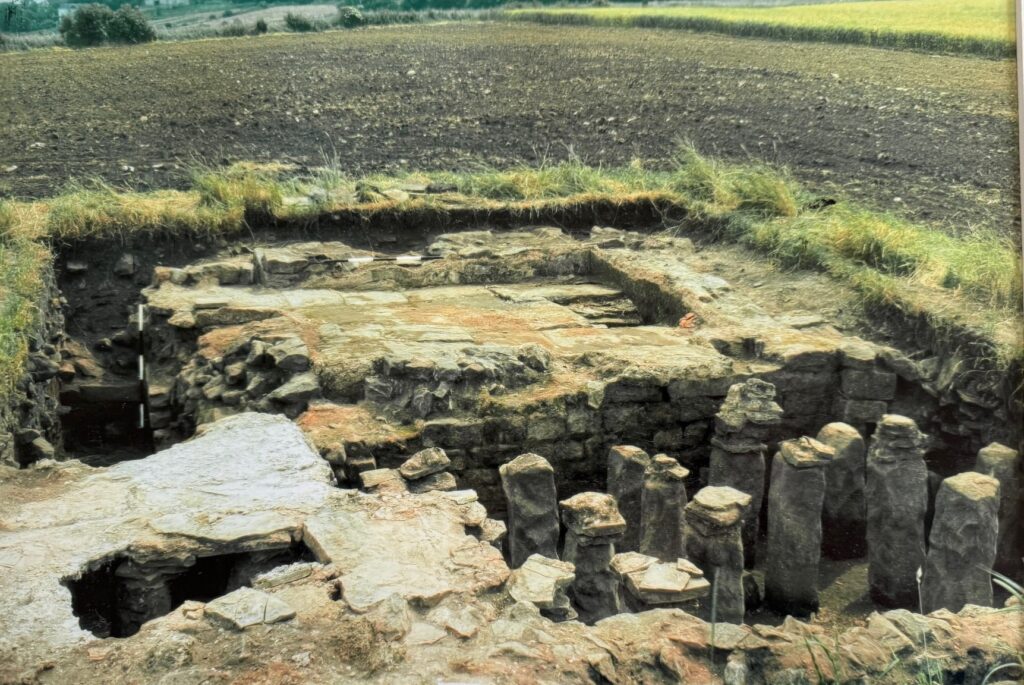
Two lads had been walking through land near Parks Farm in Conisbrough one day in 1984 when they saw pottery in the grass. The tenant farmers, the Collins family, let them dig around where they found the pottery and were amazed that, just under the surface, building materials were found.
“We could never plough that area of the land as we couldn’t get the machine through,” says former tenant farmer, Billy Collins. “We thought it was rubble from when the nearby railway was built. The excavation took eight years to complete as the archaeologists worked around every stone they found with just a trowel and a brush.”
The excavation uncovered building foundations, underfloor heating, painted plaster, and Roman glass. This evidence of sophisticated domestic life was not common for a farmstead and archaeologists concluded that the villa would have been an administrative centre for the estate.
There was also a stone tile etched with a child’s drawing of what is thought to be a mounted Roman soldier as the helmet doesn’t have a plume. The 1,800-year-old drawing is so unique there isn’t anything else like it in Britain.
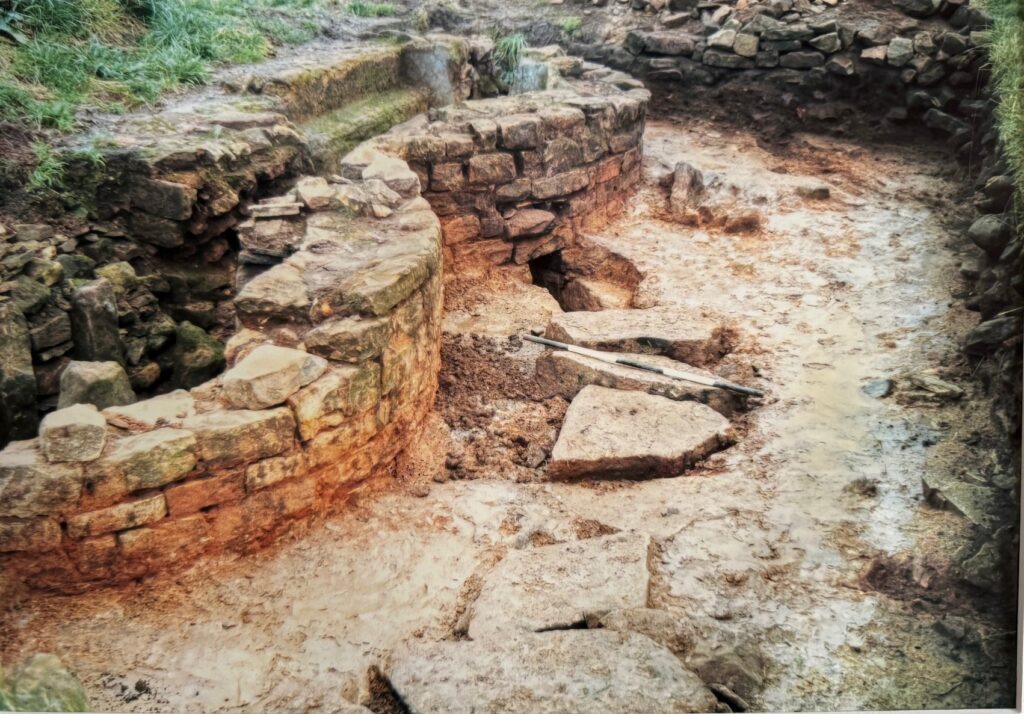
In July, the site was officially listed as a Scheduled Ancient Monument by Historic England after a three-year campaign by residents, making it a nationally protected area.
Despite this, last November it was announced the site had been targeted for industrial-scale solar development as part of the UK’s push toward renewable energy.
“The area was chosen because, on Google Maps, it looks like a blank sheet of paper. In Green Nation’s minds, there was nothing on it so they thought nobody must need it. But it hasn’t been developed on for a reason,” says Billy.
Doncaster Council has designated it as a site of special landscape value. As well as the Roman connections, the site also became a deer park for the nearby Conisbrough Castle in the medieval times. About twenty years ago, a window at the castle was found that would have been used by ladies of the manor to watch the men hunting while they were inside sewing.
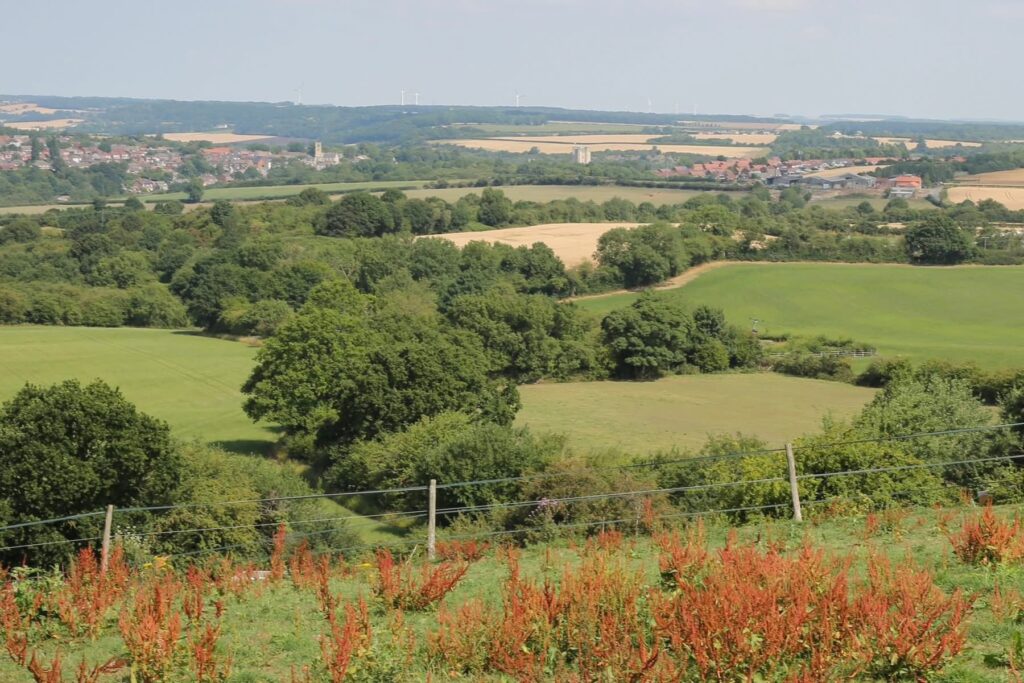
Remnants of industrial heritage have also been found with one of only two medieval iron smelting furnaces that exported ruddle to America. There was also a world-renowned pottery kiln in the small hamlet of Firsby, plus brickmaking workshops at Brick Field and Lodge Farm.
This is sacred land, not just because of what lies beneath it, but because of what has survived above ground for centuries. To blanket it with metal and glass in the name of green energy and renewable quotas should not come at the cost of environmental integrity or cultural identity.
However, because the project qualifies as a Nationally Significant Infrastructure Project (NSIP), it bypasses the usual local authority planning process and must be approved at the national level by the Secretary of State. Ironically, the Secretary of State for Energy Security and Net Zero is Ed Miliband, MP for Doncaster North.
But locals are determined not to let the decision go unchallenged. They have formed a steering group, called Save Out Greenbelt – Conisbrough Parks, and have organised various events from coffee mornings to protest walks to get the message out in the community.
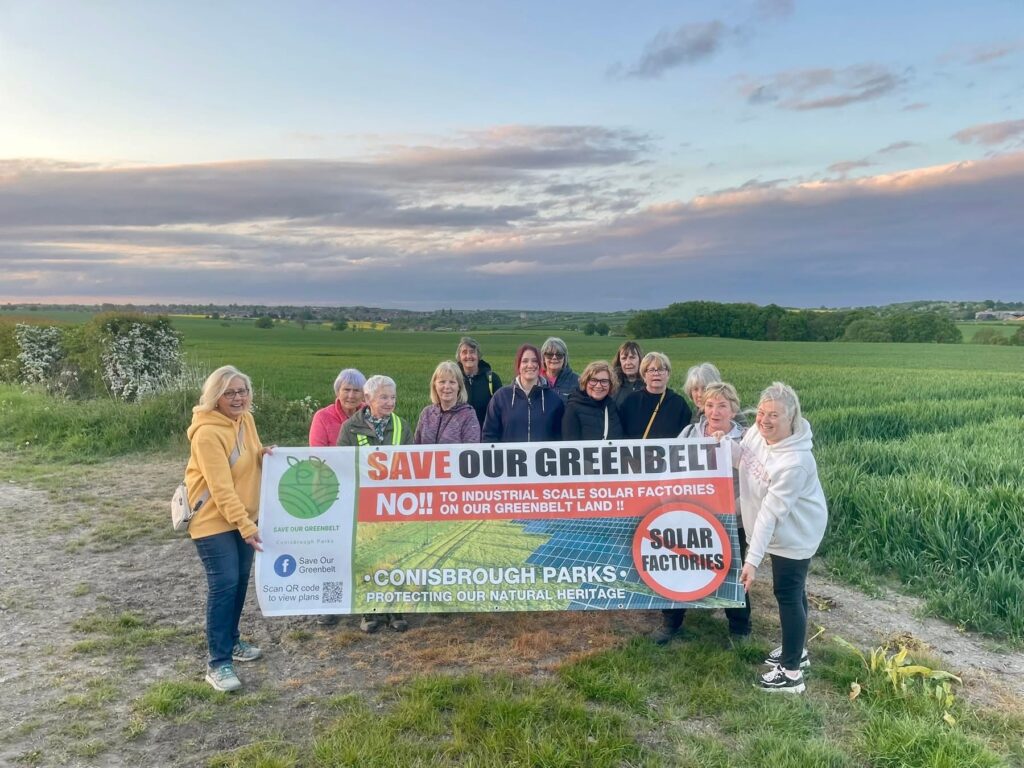
The group has also escalated the matter legally, instructing a barrister specialising in environmental and planning law to represent them in formal opposition. The legal case will centre around the site’s archaeological significance, ecological sensitivity, and the potential precedent such development could set for other heritage landscapes.
“We’re not anti-renewables,” says Billy. “Solar in the right place, like brownfield sites and on rooftops, then fair enough. But not on farming land. The government wants us to be energy efficient but what about being self-sufficient in food production? We only produce around half of our food supplies and there are no subsidies for growing food.
“The landowners have been offered £1,200 an acre in rent from Green Nation compared to an average of £200 from farm rent. It’s a no brainer for landowners but the majority of them don’t live locally so they won’t be here to see how these solar panels will affect residents.”
Billy’s family were tenants at Parks Farm for over 110 years. When he retired in 2021, the terms of the agricultural lease meant he was allowed to remain in the farmhouse. He questioned Green Nation’s owner, Jonathan Thompson, about the noise pollution from the site’s inverters.
“There will be 15 of them, each going at about 70 decibels, so it will feel like there’s a tractor going in every field. I was told not to worry as it will be more like a high-pitched whine.”
The steering group has also raised concerns about how the solar farm will impact the protected wildlife species and irreplaceable natural habitats that call Conisbrough Parks home. A wildlife conservation subcommittee has been collating surveys documenting a rich web of biodiversity across the area – something residents say would be irreparably disrupted.

Many birds on the endangered red list have been spotted in the area, including lapwings and skylarks. The land is also the nesting site of barn owls, buzzards and peregrine falcons, and there are still sheep and deer roaming around.
Green Nation’s proposal claims to mitigate any environmental impact by reducing the initial plan by a quarter to create a buffer around the panels. They also suggest they will plant a mix of native wildflowers and grasses to support biodiversity and install deer ramps along the perimeter fencing.
This scheme offers negligible local employment – just two groundskeeping roles for basic maintenance. In return, it threatens centuries of natural and historical heritage, and a place of recreation for locals.
Steering group committee member, Janet Greenwood, has lived in Mickelbring for almost forty years and grew up in Conisbrough. Her house backs onto the parkland with the public footpath running adjacent to her home.
However, she says she wasn’t told about the solar farm plans, even though she’d see them from her back window, and only heard about it when she saw a leaflet while visiting her late mother’s house in Conisbrough.
“The area is landlocked so there are no roads going through it. When my children were growing up, they could go out and play in the fields without me worrying about any cars. The public footpath from Micklebring goes under the M18 motorway bridge, but just 200 yards along the footpath you leave everything behind and you don’t see or hear the traffic.
“It’s a place used by dog walkers, Ramblers groups, horse riders and people training for charity treks. In the summer, it can be 11 o’clock and night and people will still be out walking. When we did the protest walk in August, we never crossed a tarmac path and we only walked half of the route,” she says.
Over 300 people joined the Save Our Greenbelt committee on the protest walk. There were people with dogs, ponies and even babes in arms, people who regularly use the walking route coming out in the droves to support the campaign.
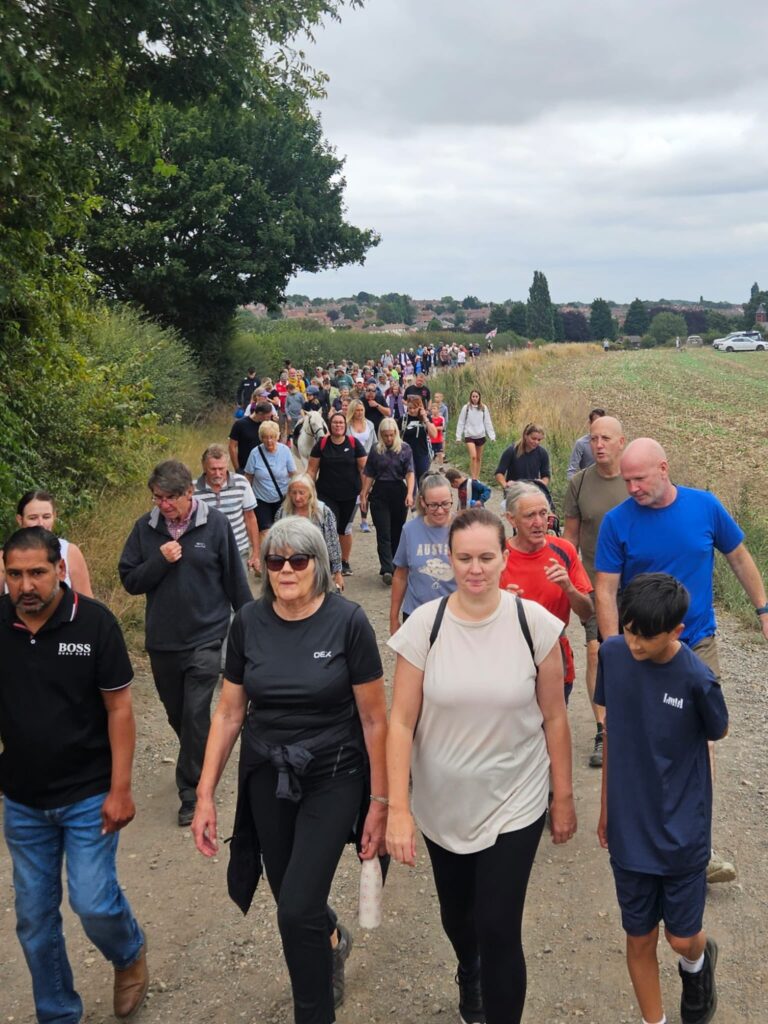
As the public consultation period winds down and the case inches closer to government review, Janet, Billy and the rest of the committee are vowing to keep the pressure on through petitions, media coverage, and continued legal scrutiny.
They’re calling on the support of the South Yorkshire community to help in any way possible, whether that’s organising coffee mornings and fundraising events to help raise money for legal fees, or sharing knowledge that will help their plight.
They’re particularly keen to hear from people who may have a background in ecology or law who can give their time and expertise. To make it cost effective, the committee are doing a lot of the ‘spade work’ themselves, acting as solicitors to compile evidence for the barrister.
However, they’re feeling optimistic following the news that a huge NSIP wind farm at Thorne was withdrawn by the developers due to lack of information about cabling.
“If we try and we fail, then we fail. But if we just sit back and do nothing then we deserve whatever happens,” says Billy. “If we win, then we will do everything we can to make sure this ancient deer park is properly protected once and for all.”
How to get involved:
Donate towards their legal fees, follow them on Facebook, join the committee or organise events by emailing conisbroughparkspreservationgroup@outlook.com




